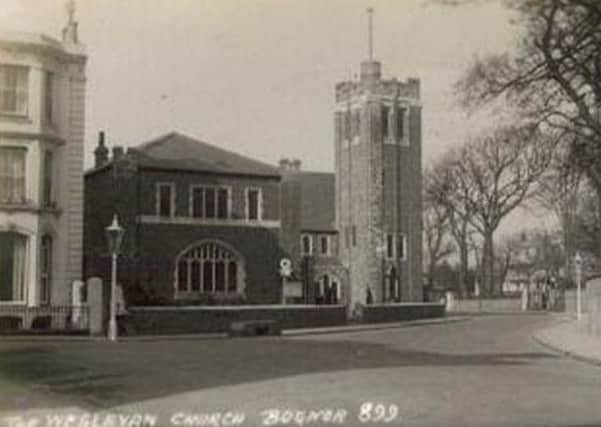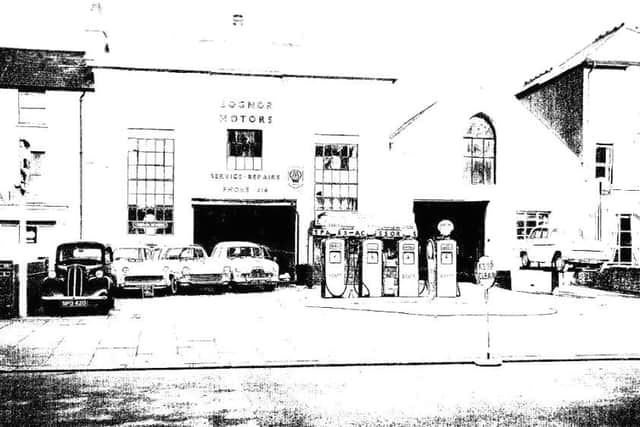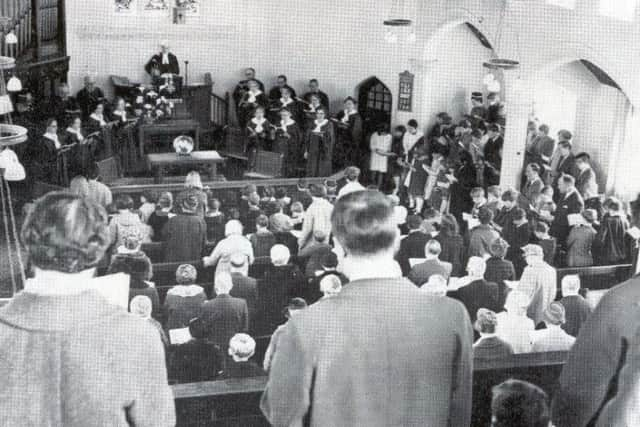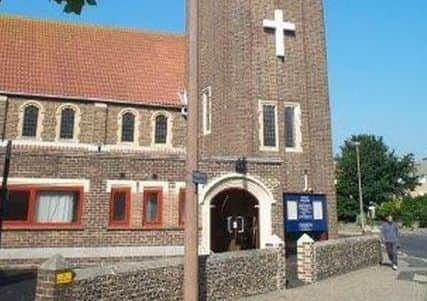Place of worship that grew from a cottage to a church
This article contains affiliate links. We may earn a small commission on items purchased through this article, but that does not affect our editorial judgement.


At one time it had premises from 1824 in a converted cottage in Chapel Street and even earlier it used another cottage on the site of the Beach Hotel on the seafront.
Its main original site was elsewhere in the High Street. As you walk along the High Street opposite the recent McDonalds, you will find various shops and it is difficult to imagine this was in fact the site of one of Bognor’s earliest churches.
Advertisement
Hide AdAdvertisement
Hide AdIt was originally a Wesleyan Chapel and was built in 1840 at a cost of £1,100, but had seating for only about 200 people.


It was solemnised for weddings from 1878.
From 1840 to 1857, lighting was created by the use of candles, but eventually in 1857 gas was installed. Interestingly this was only done on condition the promoters of the gas paid off the existing candle debt and that there should be no additional demands on the church funds for gas.
Additional land was acquired in 1893, costing £400, and a Sunday school was built. I have found a note that in 1895 the chapel cleaner was paid £4 a year for ‘doing the dusting on a Friday’.
However, visitors said the seats were becoming dusty on a Sunday and therefore the minister, the Rev Tite, carried out the dusting again on the Sunday morning before breakfast.


Advertisement
Hide AdAdvertisement
Hide AdEventually the church had sufficient funds to pay for a cleaner.
There were problems with the chapel including the fact it was not large enough and various alternative sites around the town were viewed. One such was a field on the seafront, where eventually the Theatre Royal was built and today we have The Regis.
The chapel was eventually to close in 1920 and the site was purchased by Mrs Esther Cohen for £3,500 and leased to her son for use as a garage. It eventually became known as Bognor Motors; a family concern which for a number of years was a very welcome sight to travellers in the High Street.
It finally moved to a site in Longford Road in 1980 partly due to the progress that took its toll along the High Street as more new shops and offices were required.


Advertisement
Hide AdAdvertisement
Hide AdIt has now moved to Durban Road, Bognor Regis with another site in Chichester. One of the premises became the electricity showrooms and now even it has left the town, to be replaced several times with new traders.
Eventually the chapel was moved to the current site of the Methodist Church as we know it today. The opportunity was taken to purchase their present site in 1920 at a total cost in the region of £10,650.
The site itself cost £600 which was purchased from the Merchant Taylor’s Company which for many years had supported the convalescent home at Fitzleet House, the area of today’s Queensway.
Eventually this triangle of land was purchased on land adjoining The Bedford Hotel, today the Unicorn.
Advertisement
Hide AdAdvertisement
Hide AdThe local newspapers raised objections to this site, which had trees on it and they believed helped to enhance the view along the High Street.
The small wall in front of the church was retained and it was here in 1886 that a drinking fountain was erected to the memory of Dr Osborne by the local Friendly Societies, as he had been one of their main benefactors.
Charles was cited as the ‘oldest member of the medical profession in Bognor’ in his obituary.
Mr James Withers was the architect and he was instructed to prepare all the necessary plans and drawings for this new church construction.
Advertisement
Hide AdAdvertisement
Hide AdThe details for the building of this church were in fact very precise in that it should be 84ft long by 43ft wide, with 420 seats, of which 60 must be free, eligibly situated and made comfortable and a further 60 appropriated to Sunday school children.
It would be interesting to hear what the arrangements are for today’s congregation.
Looking through some newspaper cuttings, I came across a copy of The Methodist Recorder with a feature on ‘Peeps at Living Methodism – Happy days at Bognor Regis’ written in June 1932.
This report describes the visit of a writer from the ‘Methodist Church’ magazine, where he describes the church ‘as having a bright red roof, which I say at once has, I think, the best seaside site I have yet seen’.
Advertisement
Hide AdAdvertisement
Hide AdHe continued ‘that the church looked very inviting, with an open door and seem to say ‘look inside’. The visitors book had been well used by visitors from all around the country’.
He remarked here that ‘this pleases me after seeing so many dull, dead looking churches tightly padlocked’.
After strolling around the town he returns to the ‘beautiful bowling-green where gentlemen with a few hours to spare engage with enthusiasm in that admirably friendly game, and look again at the red roofed Methodist Church’.
Ultimately the chapel was registered as a Place of Public Worship on February 10, 1925 by the superintendent minister. The Rev FR Duffill said that from that day forward the word ‘church’ would formally replace the word ‘chapel’.
Advertisement
Hide AdAdvertisement
Hide AdThe foundation stone was laid on April 20, 1924 with the opening and dedication of this church taking place on Wednesday, April 1, 1925. In 1930, on Wednesday, October 15, there was an opening ceremony with a bazaar being opened by Lady Holloway.
In 1967, the church published
a ‘Methodist Tapestry’
detailing the history of the Methodist Church in Bognor from 1810 to 1967. I found an entry on the internet for the church, which had this thought, ‘it was built the wrong way around, or perhaps the centre of the town moved after Bognor became Bognor Regis’.
This remark alluded to the rather bleak outside appearance to the church from the High Street, and this was one of the reasons for its new entrance being reconstructed, with a more open approach into the church, in 2001.
I must say it is a very pleasant area, as you enter the rear of the church, especially when the sun is shining.
Advertisement
Hide AdAdvertisement
Hide AdDon’t miss out on all the latest breaking news where you live.
Here are four ways you can be sure you’ll be amongst the first to know what’s going on.
1) Make our website your homepage at www.bognor.co.uk/
2) Like our Facebook page at www.facebook.com/BognorRegisObserver
3) Follow us on Twitter @BogObserver
4) Register with us by clicking on ‘sign in’ (top right corner). You can then receive our daily newsletter AND add your point of view to stories that you read here.
And do share with your family and friends - so they don’t miss out!
The Bognor Observer - always the first with your local news.
Be part of it.